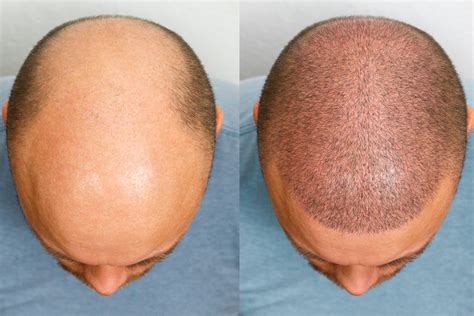The Hair Loss Epidemic: A Growing Concern
Millions of people worldwide, both men and women, experience hair loss. The American Academy of Dermatology estimates that over 80 million Americans suffer from hair loss. This problem is expected to grow in the coming years due to factors such as pollution, stress, and unhealthy lifestyles.

Types of Hair Loss and Their Causes
Hair loss can manifest in various ways, each with its unique causes:
- Androgenetic Alopecia (AGA): The most common type of hair loss, primarily affecting men. It is caused by a combination of genetics and the action of the hormone dihydrotestosterone (DHT). DHT causes hair follicles to shrink, leading to thinning and eventual hair loss.
- Alopecia Areata: An autoimmune disease where the body’s immune system attacks hair follicles, resulting in patches of hair loss.
- Telogen Effluvium: Temporary hair loss triggered by physical or emotional stress, such as major surgery, childbirth, or emotional trauma.
- Traction Alopecia: Hair loss caused by prolonged stress on hair follicles due to hairstyles such as tight braids or ponytails.
- Anagen Effluvium: Sudden and severe hair loss resulting from chemotherapy or radiation therapy.
Hair Replacement Hair: A Solution for Hair Loss
For individuals suffering from hair loss, hair replacement hair has emerged as an effective solution. It involves using wigs, hairpieces, or other devices to create the appearance of a full head of hair.
Types of Hair Replacement Hair
Various types of hair replacement hair are available to cater to different needs and preferences:
1. Wigs
Wigs are complete hairpieces that cover the entire scalp.
2. Hairpieces
Hairpieces are partial hair additions designed to fill in specific areas of hair loss.
3. Hair Extensions
Hair extensions add length and volume to existing hair.
4. Tape-In Extensions
Tape-in extensions use adhesive tape to attach hairpieces to natural hair.
5. Clip-In Extensions
Clip-in extensions are temporary hairpieces that can be easily removed and reattached.
Advantages of Hair Replacement Hair
Hair replacement hair offers numerous benefits:
- Confidence Booster: Helps restore self-confidence by concealing hair loss.
- Natural Appearance: Modern hair replacement techniques can create a natural-looking appearance that is indistinguishable from real hair.
- Non-Invasive: Unlike hair transplant surgery, hair replacement hair is a non-invasive option that does not involve any incisions or scarring.
- Versatile Styling: Allows for a wide range of styling options, including coloring, cutting, and heat styling.
Common Mistakes to Avoid
When considering hair replacement hair, it is crucial to avoid common mistakes:
- Choosing the Wrong Type of Hair: Select the type of hair replacement hair that best suits your needs and lifestyle.
- Improper Fitting: Ensure that your hair replacement hair is properly fitted to avoid discomfort or slippage.
- Poor Quality Hair: Opt for high-quality hair replacement hair to prevent tangles, shedding, and premature wear.
- Overuse of Styling Products: Avoid excessive use of styling products, as they can damage the hair replacement hair.
- Neglecting Maintenance: Regular cleaning and maintenance are essential to extend the lifespan of your hair replacement hair.
Step-by-Step Approach to Hair Replacement Hair
Follow these steps for a successful hair replacement hair experience:
1. Consultation: Schedule a consultation with a hair replacement specialist to discuss your hair loss concerns and explore the available options.
2. Selection: Choose the type of hair replacement hair that best meets your needs and budget.
3. Fitting: Have your hair replacement hair fitted by a professional to ensure a secure and comfortable fit.
4. Maintenance: Establish a regular cleaning and maintenance schedule to keep your hair replacement hair in optimal condition.
Tips and Tricks
- Consider Custom-Made Hair Replacement Hair: Custom-made hairpieces are designed to match the texture, color, and style of your natural hair, providing the most natural-looking results.
- Explore New Technologies: Advancements in hair replacement technology continuously introduce new and improved materials and techniques, offering greater comfort and durability.
- Consult with a Dermatologist: If you suspect you are experiencing excessive hair loss, consult with a dermatologist to determine the underlying cause.
- Be Patient: Finding the right hair replacement hair solution may take time. Be patient and explore different options before making a decision.
- Seek Professional Advice: Always consult with a hair replacement specialist or dermatologist before making any permanent hair replacement decisions.
Conclusion
Hair replacement hair is an effective solution for individuals experiencing hair loss. By choosing the right type, following proper maintenance practices, and avoiding common mistakes, you can regain a full head of hair and boost your confidence. Remember, hair loss is a common concern, but it does not have to define you. With the advancements in hair replacement technology, you can restore a natural and youthful appearance while embracing your style and individuality.
